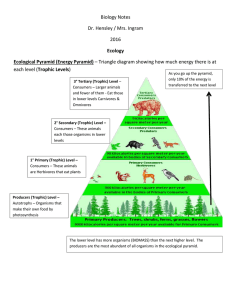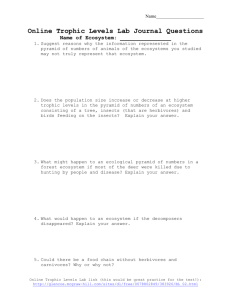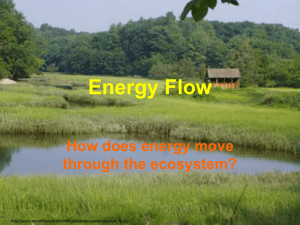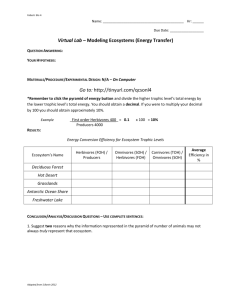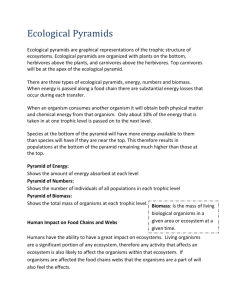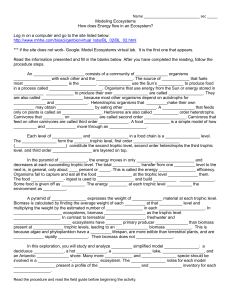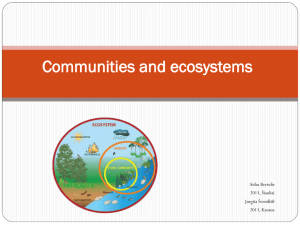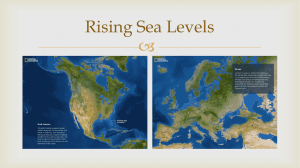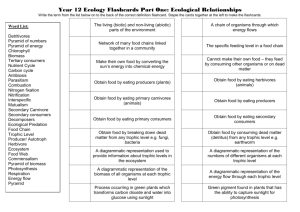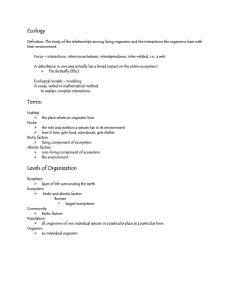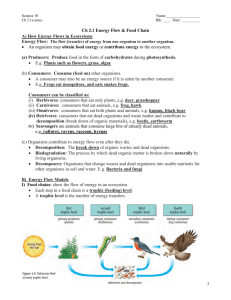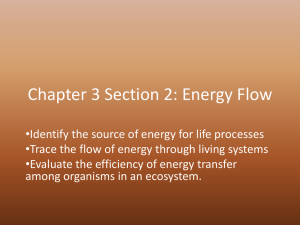handout terms
advertisement
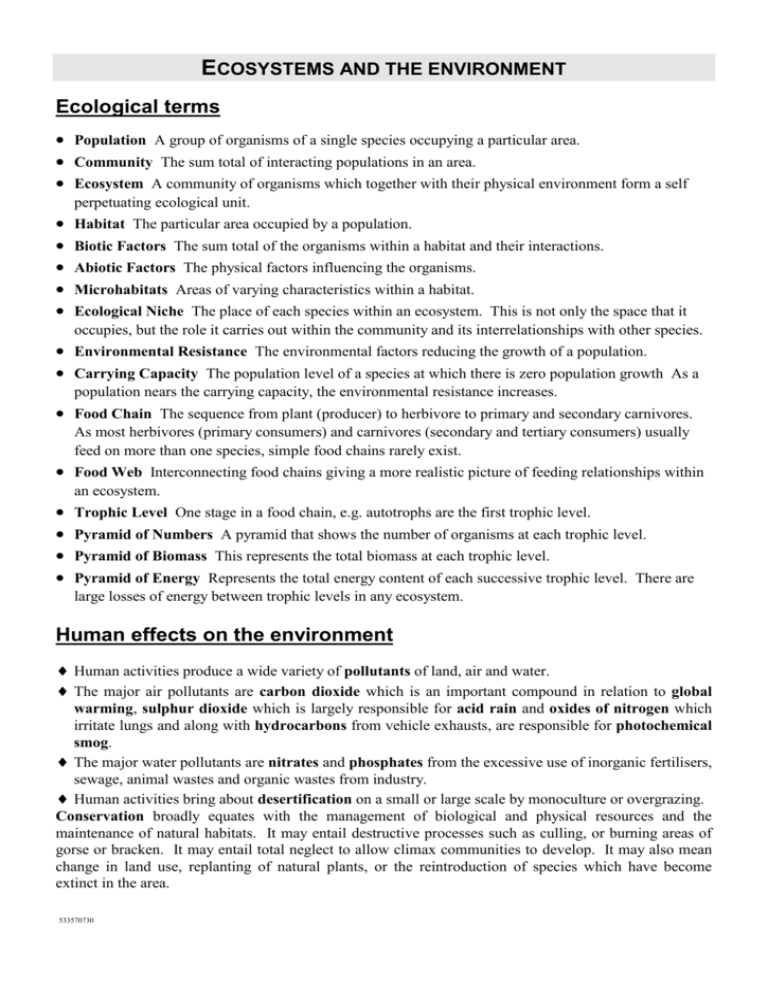
ECOSYSTEMS AND THE ENVIRONMENT Ecological terms Population A group of organisms of a single species occupying a particular area. Community The sum total of interacting populations in an area. Ecosystem A community of organisms which together with their physical environment form a self perpetuating ecological unit. Habitat The particular area occupied by a population. Biotic Factors The sum total of the organisms within a habitat and their interactions. Abiotic Factors The physical factors influencing the organisms. Microhabitats Areas of varying characteristics within a habitat. Ecological Niche The place of each species within an ecosystem. This is not only the space that it occupies, but the role it carries out within the community and its interrelationships with other species. Environmental Resistance The environmental factors reducing the growth of a population. Carrying Capacity The population level of a species at which there is zero population growth As a population nears the carrying capacity, the environmental resistance increases. Food Chain The sequence from plant (producer) to herbivore to primary and secondary carnivores. As most herbivores (primary consumers) and carnivores (secondary and tertiary consumers) usually feed on more than one species, simple food chains rarely exist. Food Web Interconnecting food chains giving a more realistic picture of feeding relationships within an ecosystem. Trophic Level One stage in a food chain, e.g. autotrophs are the first trophic level. Pyramid of Numbers A pyramid that shows the number of organisms at each trophic level. Pyramid of Biomass This represents the total biomass at each trophic level. Pyramid of Energy Represents the total energy content of each successive trophic level. There are large losses of energy between trophic levels in any ecosystem. Human effects on the environment Human activities produce a wide variety of pollutants of land, air and water. The major air pollutants are carbon dioxide which is an important compound in relation to global warming, sulphur dioxide which is largely responsible for acid rain and oxides of nitrogen which irritate lungs and along with hydrocarbons from vehicle exhausts, are responsible for photochemical smog. The major water pollutants are nitrates and phosphates from the excessive use of inorganic fertilisers, sewage, animal wastes and organic wastes from industry. Human activities bring about desertification on a small or large scale by monoculture or overgrazing. Conservation broadly equates with the management of biological and physical resources and the maintenance of natural habitats. It may entail destructive processes such as culling, or burning areas of gorse or bracken. It may entail total neglect to allow climax communities to develop. It may also mean change in land use, replanting of natural plants, or the reintroduction of species which have become extinct in the area. 533570730

